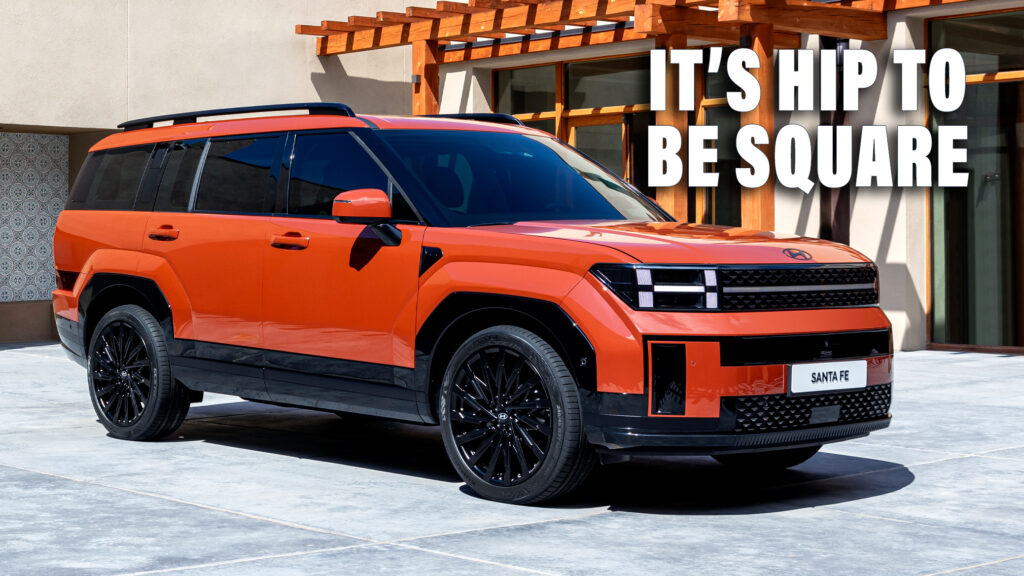Hyundai challenged its designers to remove all of the sporty design cues from the Santa Fe in an effort to “make boxy cool again”
September 18, 2023 at 16:29
 –>
–> 
–>
Crossovers and SUVs can be a lot of things. Spacious, convenient, and even powerful. But can they ever truly be sporty? Hyundai designer Nicola Danza doesn’t think that his company’s SUVs are, and that’s why he is working to remove “sporty” design language from its unsporty vehicles.
Danza is reacting to a rise in SUVs and large crossovers that have coupe-like rooflines, blistered wheel arches, and all of the other trappings of sports cars, despite possessing none of their performance characteristics.
“In this segment we realized that all the cars tended to look the same,” Danza told Top Gear. “They’re all slanted and trying somehow to be a sporty SUV that they’re not. They’re big, they’re huge. How many blisters can you put on the body side to pretend that you’re sporty?”
advertisement scroll to continue
So, when he and his team were working on the new Santa Fe, they challenged themselves to “make an anti-design car.” They wanted the car to be more practical and that meant making it boxier, “so let’s make boxy cool again,” he said.
Read: Infiniti QX Monograph Is An Anti-Wedge SUV That Previews The 2025 QX80
“We forced the designers to really think whether they needed each line and each blister,” said Danza. “It was kind of like a Giugiaro way of designing cars from the 1970s. As a provocation to our management, we showed them the first model of this car with square wheels. It’s a box, so let’s make everything boxy. Actually, it’s been one of the most fun projects I’ve worked on.”
Danza admits that the team took inspiration from others in the automotive world, including Jeep, which is also engaged in its own mission to make boxy design work in an industry increasingly obsessed with electrification.
Jeep sticks with boxy
“There’s a lot of companies around the world that are going into the crossover world, but Jeep will remain more… boxy world,” Daniele Calonaci, who designed the Jeep Avenger, told Top Gear. “Right now, people ask to have high ground clearance, or a commanding position. A lot of people require electrification.”
While a boxy design is less aerodynamic than, say, the Hyundai Ioniq 6’s streamlined shape, Calonaci said he was willing to give up a few miles to create a vehicle that works better for Jeep customers.
He argued that crossover-coupes have no real headroom, “so when you are on the highway during the summer, you have a lot of crossovers with a roof box because they don’t have space in the trunk. Jeep will remain boxy. Maybe we will lose two kilometers in the range, but in the end we will make our customer happy.”
He claims that the by making practical, boxy designs that look good, Jeep can help ease customers into the EV transition. Meanwhile, Danza said that the boxy shape of the Santa Fe will likely open it up to customization.
“You can personalize it too,” continues Danza on the Santa Fe. “In Korea there will be a Calligraphy version which is lowered with big wheels, whereas in America I’m 99 percent sure that they’re all going to lift them, put bigger wheels on and go off-road.”
It’s part of their mission to make vehicles that live up to customer expectations, and maybe even earn a place in their hearts.



